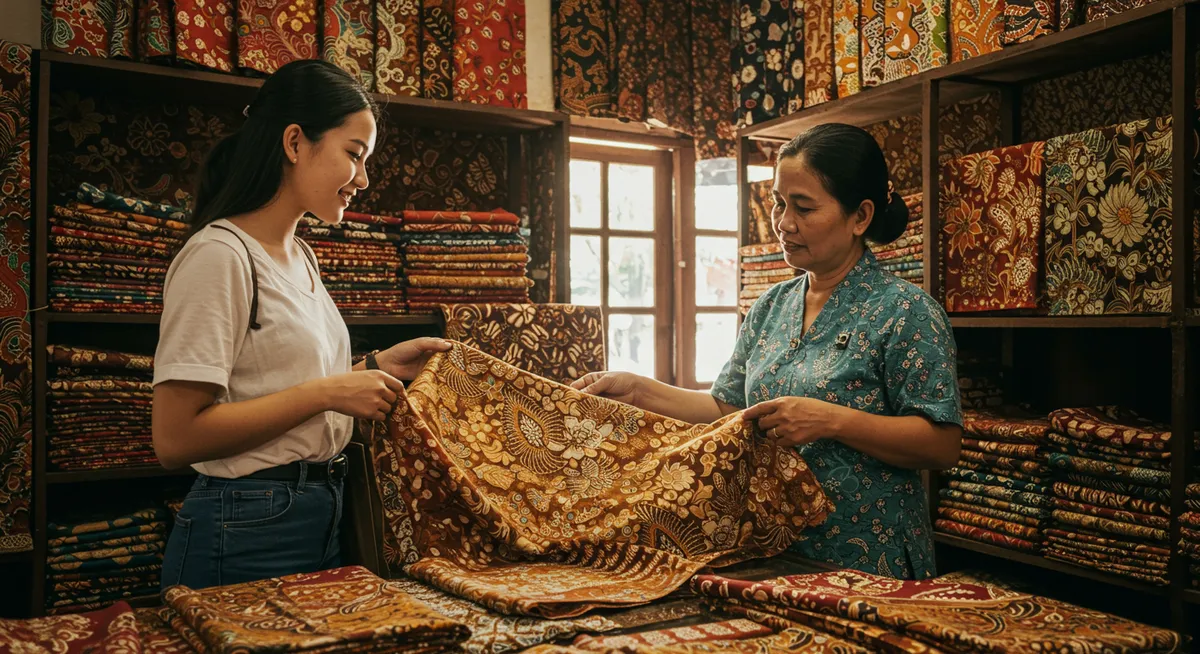
Traditional Batik Shopping in Yogyakarta: A Guide
Table of Contents
Want to find the best travel deals for this destination? Chat with our travel hacking specialist!
Get Travel HacksCategory: traditional-batik-shopping-in-yogyakarta-where-to-buy
Discovering Authentic Batik in Yogyakarta
Yogyakarta, often hailed as the cultural heart of Java, is synonymous with exquisite batik. From my own travels through Indonesia, I've learned that finding authentic, traditional batik isn't just shopping; it's an immersive experience into the nation's artistic soul. The city's streets are alive with the rhythmic tapping of canting tools and the earthy scent of wax, signaling a rich heritage. This guide is designed to help you navigate the vibrant markets and specialized galleries, ensuring you bring home a piece of genuine Javanese artistry. Understanding where to buy and what to look for will transform your traditional batik shopping in Yogyakarta into a truly memorable adventure.
Where to Find Traditional Batik in Yogyakarta
When seeking traditional batik in Yogyakarta, start your journey at the bustling Beringharjo Market. Here, you'll find an overwhelming array of fabrics, from affordable printed pieces to more elaborate hand-drawn patterns. Always look for the specific sections dedicated to batik, often on the upper floors. For a more curated experience, explore the shops along Jalan Malioboro, though be mindful of quality variations. More discerning buyers should visit established workshops or galleries, like Batik Keris or those around the Kraton area, where the artistry of authentic Javanese batik is palpable. These spots are crucial for true traditional batik shopping in Yogyakarta, ensuring you find genuine hand-painted or stamped items. For a broader overview of the city's highlights, refer to our comprehensive Yogyakarta travel guide.
Understanding Batik Quality & Types
To truly appreciate and purchase high-quality batik, understanding its types is crucial. The pinnacle is Batik Tulis (hand-drawn batik), identified by its intricate, often imperfect lines and reversible patterns, indicating the artisan’s meticulous handwork. Next is Batik Cap (stamped batik), created using copper stamps, offering more uniformity but still demonstrating traditional methods. Lastly, avoid 'batik print,' which is merely fabric printed with batik motifs and lacks the soul of true wax-resist dyeing. I always check the reverse side of the fabric; real batik patterns penetrate the cloth. This distinction is key to successful traditional batik shopping in Yogyakarta, ensuring you invest in genuine artistry rather than a mass-produced imitation. Explore the top things to do in Yogyakarta beyond shopping to round out your cultural experience.
Smart Shopping Tips for Batik Buyers
Navigating the vibrant markets for your traditional batik shopping in Yogyakarta requires a few smart strategies. Firstly, bargaining is common, especially in local markets like Beringharjo. Start by offering about 50-70% of the initial price and negotiate respectfully. Secondly, always examine the fabric closely for consistency and quality, especially when looking for Batik Tulis. Ask sellers about the creation process; reputable artisans will be happy to explain. I've found that engaging with the sellers, even learning a few basic Indonesian phrases, can lead to better deals and a richer cultural exchange. Remember, patience is a virtue here. Plan your shopping excursion efficiently as part of your Yogyakarta itinerary for 3 days to make the most of your trip.
Caring for Your Cherished Batik Pieces
Once you’ve acquired your beautiful traditional batik from Yogyakarta, proper care is essential to preserve its vibrancy and integrity. Always hand wash batik using mild detergent or special batik soap in cool water. Avoid harsh chemicals and machine washing, which can damage the delicate wax-resist dyes and fabric fibers. Gently squeeze out excess water, then air-dry the batik in the shade, away from direct sunlight, to prevent color fading. Iron on a low setting, preferably while the fabric is slightly damp, and from the reverse side. Proper care ensures your batik remains a cherished souvenir, a lasting reminder of your memorable traditional batik shopping in Yogyakarta. For more travel tips and destination guides, visit Plan Vacation Asia.
Frequently Asked Questions
How do I tell authentic batik from printed fabric?
Is bargaining expected when buying batik in Yogyakarta?
What's the best place for high-quality batik in Yogyakarta?
Traditional batik shopping in Yogyakarta is more than just acquiring a souvenir; it’s an opportunity to connect with Indonesia’s profound artistic legacy. By understanding where to look, what to seek, and how to care for your purchases, you ensure your batik is a genuine piece of art, steeped in history and culture. These vibrant fabrics tell stories, and bringing one home is like taking a piece of Java with you. Let your next journey to Yogyakarta be an adventure into the heart of its textile traditions. Begin planning your authentic Indonesian experience today!